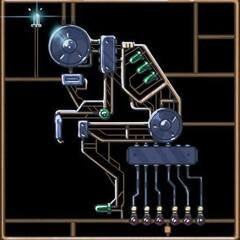Effect of turbo power limits and speedstep/speedshift with Throttlestop.
2 hours ago, Jeff4321 said:Dell G3
Some Dell laptops have a significant throttling problem. When they get hot, instead of Intel thermal throttling taking care of the CPU, Dell decided to create their own throttling method. Dell's method is a disaster. Dell laptops will reduce the turbo power limits to an absurdly low value. This causes some severe power limit throttling. You are lucky if your CPU is still able to run at 1.3 GHz when this happens. Many Dell laptops with this "feature" will run throttled like this for an extended period of time.
This problem has nothing to do with SpeedStep or Speed Shift. On most recent computers, the BIOS will automatically enable Speed Shift Technology when you boot up. If this happens, SST will be shown in green on the main screen of ThrottleStop. When you check the Speed Shift option in the TPL window, this ensures that Speed Shift is enabled and it also sends the Speed Shift Min and Speed Shift Max values to the CPU. If your BIOS is doing this correctly, you do not need to check this box. I never trust anything so I check that box to make sure the CPU Speed Shift variables are setup correctly.
On the main screen is the Speed Shift EPP box. EPP stands for Energy Performance Preference. It allows you to request whether you want maximum performance or maximum power savings. If you are using the Windows Balanced power plan, you do not need to use this option in ThrottleStop. Windows 10 can manage EPP. Open the FIVR window and look at the monitoring table. When you move the Windows power slider in the system tray back and forth, you should see the Speed Shift EPP value change in the monitoring table. This is an easy way to confirm that Windows is managing this setting correctly.
To try to solve Dell's bizarre throttling scheme, you need to remove the DPTF driver and you must block this, take ownership of this, so that Windows cannot reinstall this driver. Do some Google searching about this problem. Here is some more information about this driver and how to get rid of it.
2 hours ago, Jeff4321 said:unchecked the "disable and lock turbo power limit box
When you uncheck this box, you have to shut down your computer so the CPU can reset itself.
















Create an account or sign in to comment
You need to be a member in order to leave a comment
Create an account
Sign up for a new account in our community. It's easy!
Register a new accountSign in
Already have an account? Sign in here.
Sign In Now